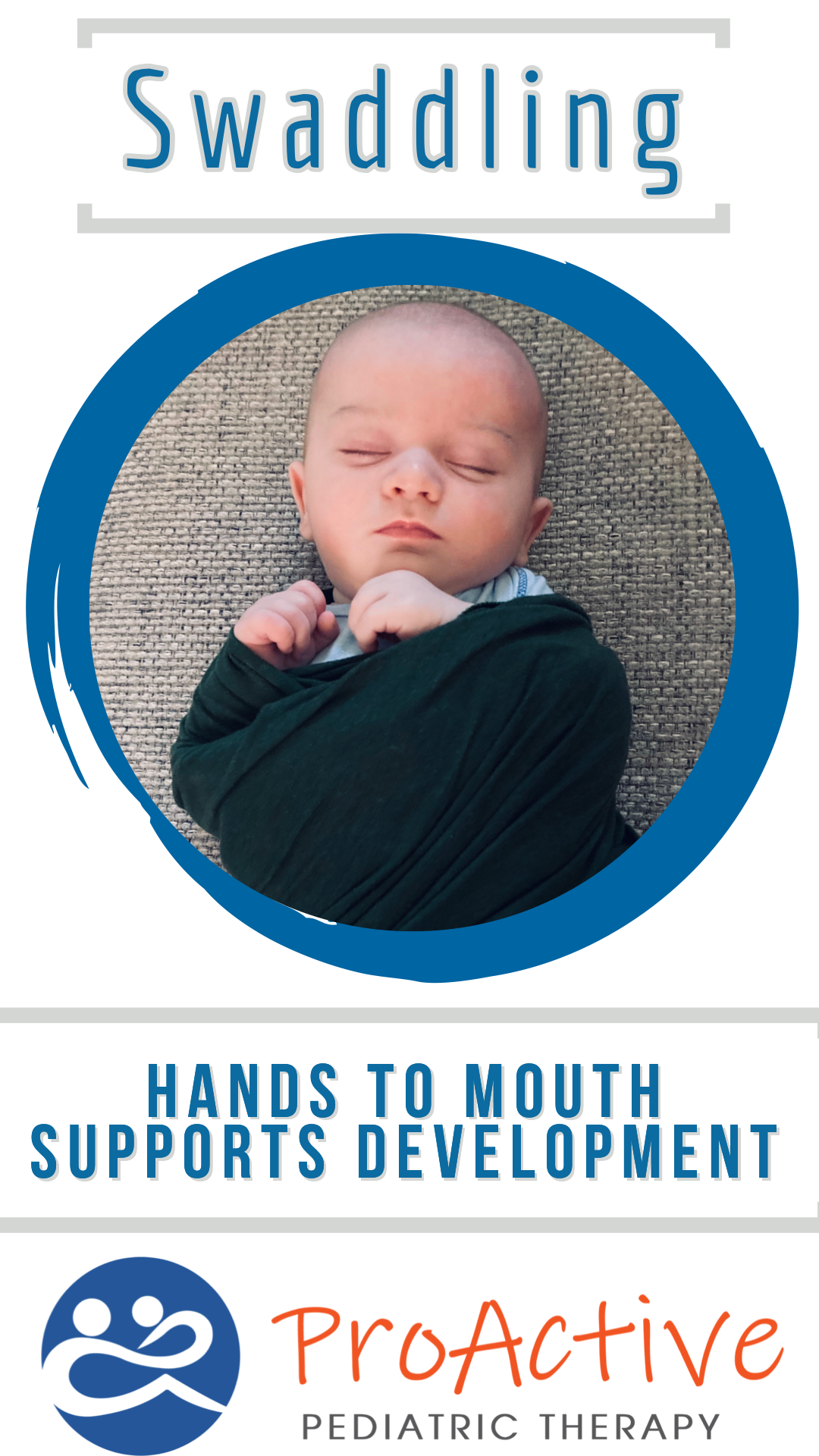Hand to Mouth, Swaddling, and Development
Many years ago as a young, inexperienced, sleep-deprived parent, I was begging for help to get my daughter to sleep through the night (although now I better understand how not sleeping through the night and eating every 1 1/2 – 2 hours (especially for newborns and even more so, breastfed newborns) is VERY NORMAL for babies…but that’s for another post!). So early on, my own sweet mama showed me how to swaddle her. She was a magician, my mother. She placed that beautiful girl in the middle of the blanket, brought her arms to her chest so her sweet little hands rested just under her chin, and wrapped her up like a little burrito. Content, it gave her the pressure and security she’d felt for the previous nine months cocooned in the womb.
Did you note that mom was innately wise enough to bring her hands together near her face? These days there are an unbelievable amount of convenient products on the market to keep babies calm and safe with varying instructions on the “right way” to swaddle, most of which encourage parents to swaddle with babies arms at their sides to prevent them from getting out of the blanket and therefore from waking up and crying. While I get that the point is to keep baby contained, it’s so, so important that babies have opportunity to move around and get their hands to their mouths.
Why is hands to mouth and some freedom to move so important you ask?
1. With their hands and fingers near (and even in) their mouths, they often reflexively start moving their tongue in and out and side to side. They also may suck or chew on their fingers, moving their jaws and cheek muscles. All of these motions give babies opportunity to practice the skills that are necessary for safe, efficient eating as a newborn and as they grow.
2. Hands to mouth helps to desensitize the gag reflex, which later helps them to move food around in their mouth.
3. It’s how they learn! The lips, hands, feet and genitals send more information to the brain when stimulated than any other part of the body. Imagine all the learning going on when both the hands and the mouth are stimulated at the same time!!!
4. For breastfeeding babies, hands accessible swaddling allows baby’s hands to hug the breast and stimulate mom’s nipple, triggering the release of the hormone that causes milk to flow. It also allows for skin-to-skin contact, reducing baby’s stress, helps regulate his/her temperature, helps stabilize breathing, hormone levels, and heart rate.
5. Swaddled too tightly, babies can become overheated, not only from the blanket, but also because they can’t move their arms and legs around to cool themselves off.
6. While we adults value our sleep and love it when our baby sleeps for long stretches, swaddling can lead newborns to sleep more and often deeper, potentially slowing weight gain due to decreased feeding frequency.
It’s good to note there are what we might call “stages” of swaddling. Preemies and newborns, for instance, typically love that burrito feeling, with shoulders softly tucked forward, allowing subtle, independent movements. As baby gets a bit older, it is beneficial to allow for a little more movement while still encouraging hands toward the middle of their bodies and toward their face (but not straight down at their sides) so they learn boundaries and control of their arms and hands within those boundaries.
Of course, safety is of utmost importance! Never put a baby to sleep with a loose blanket. Most physicians recommend that you stop swaddling once baby is able to roll over, so he doesn’t get trapped in a face-down position, causing suffocation
So, is swaddling bad? Absolutely not! But gently tucking hands near their face can benefit their development in more ways than you can ever imagine and will help them THRIVE!
Know someone with a newborn baby? Please share this post! Have more questions? Contact ProActive Pediatric Therapy, we want to help babies and their families THRIVE!

